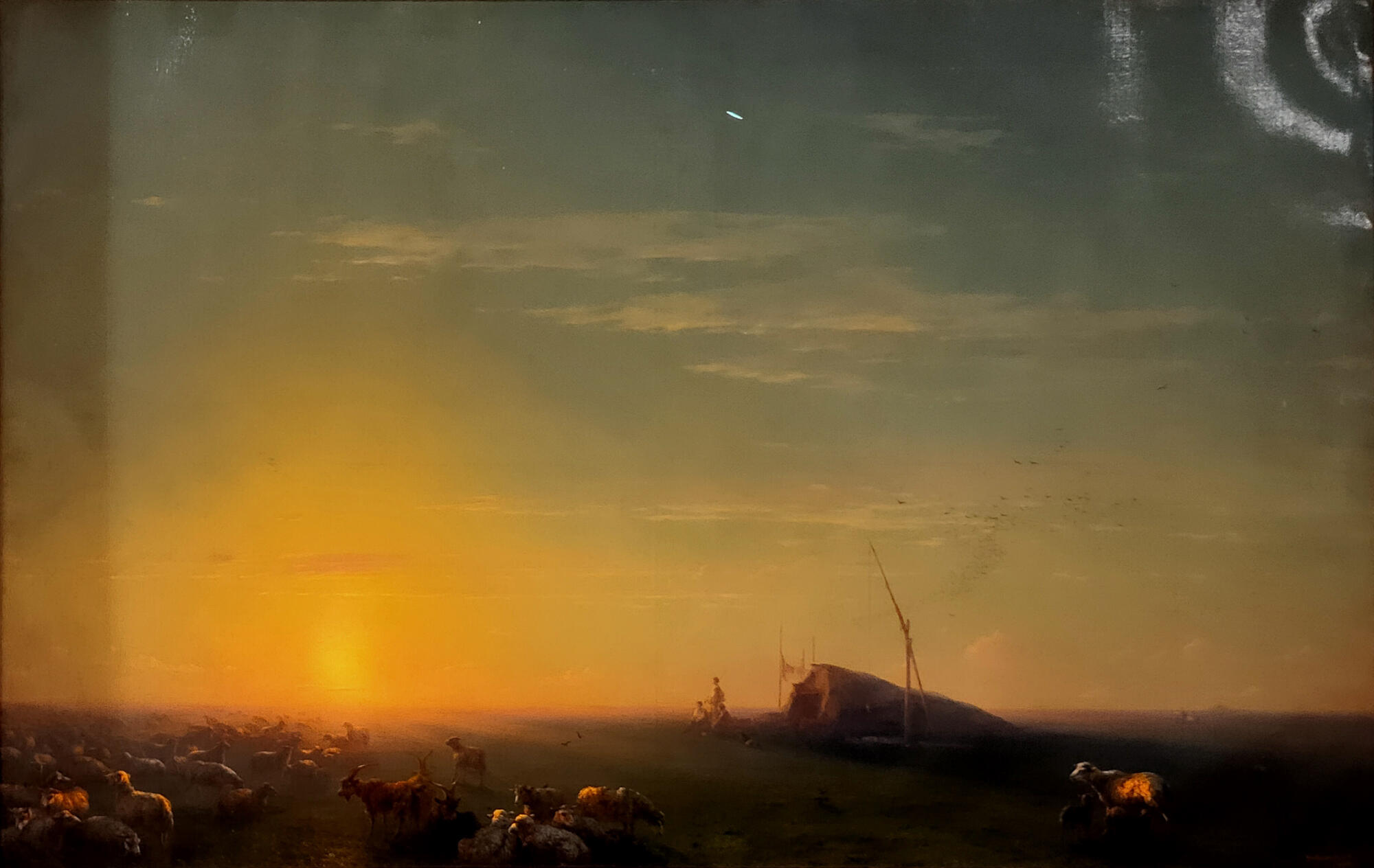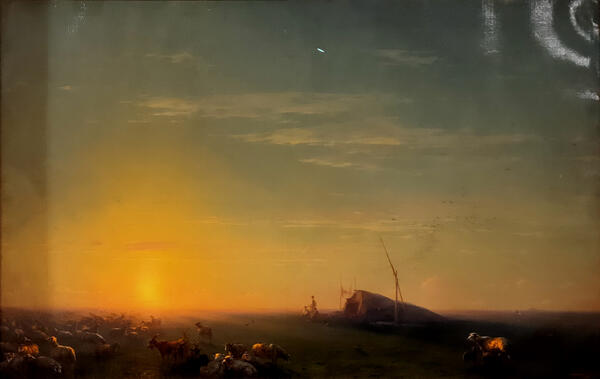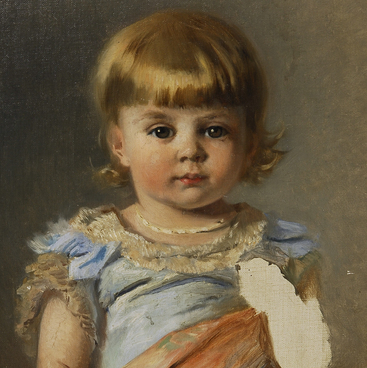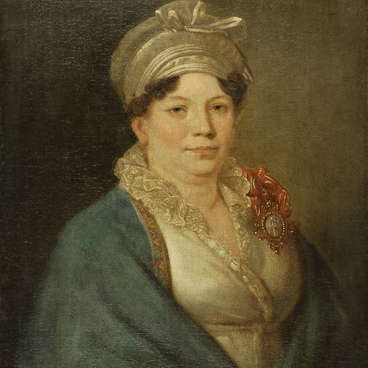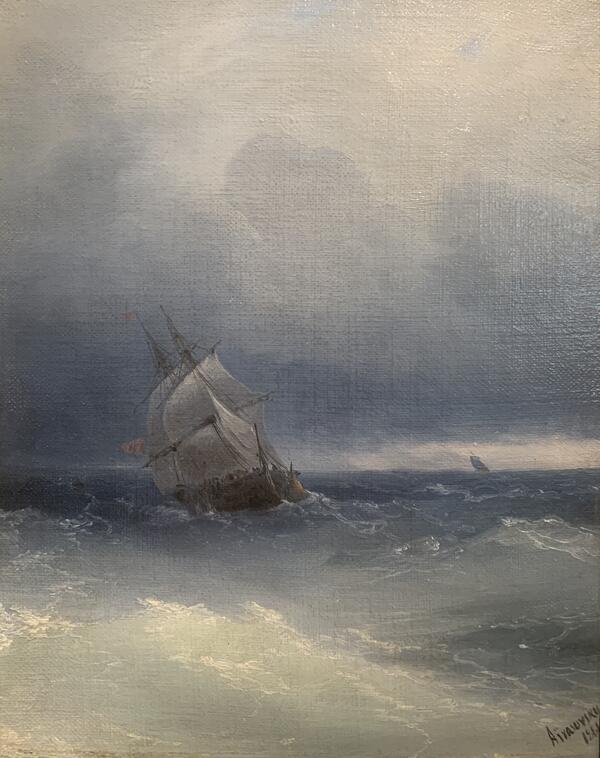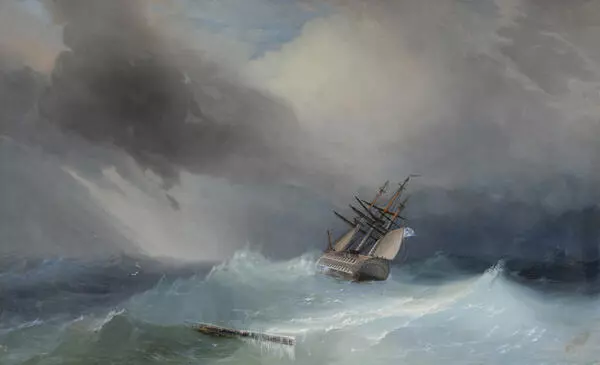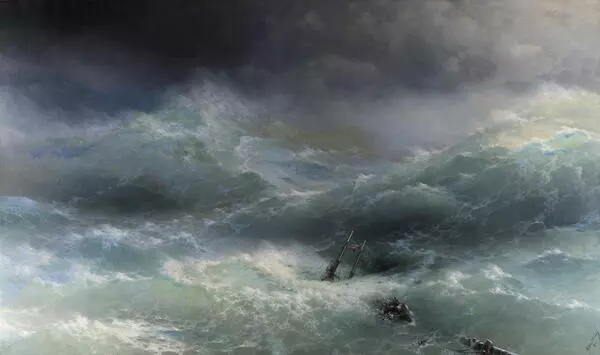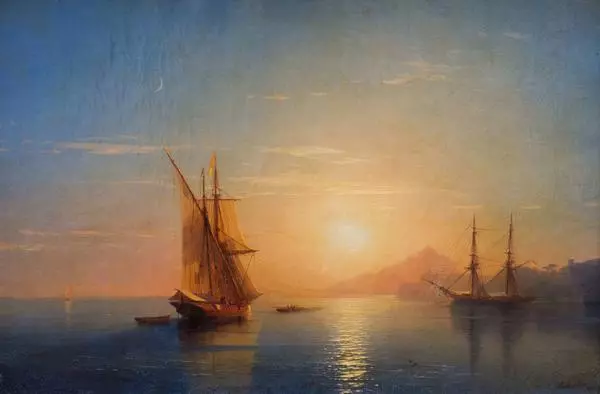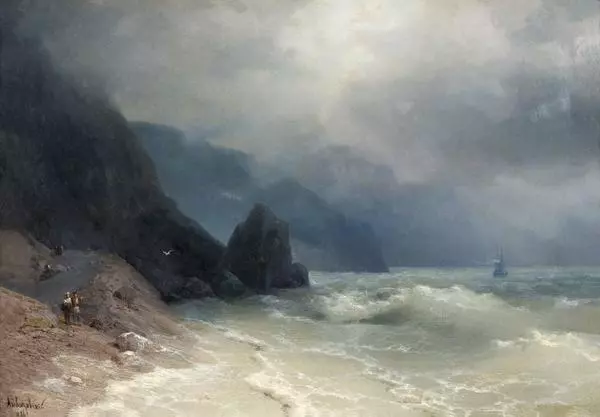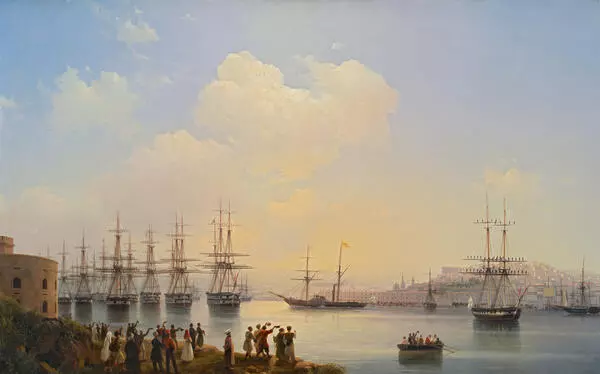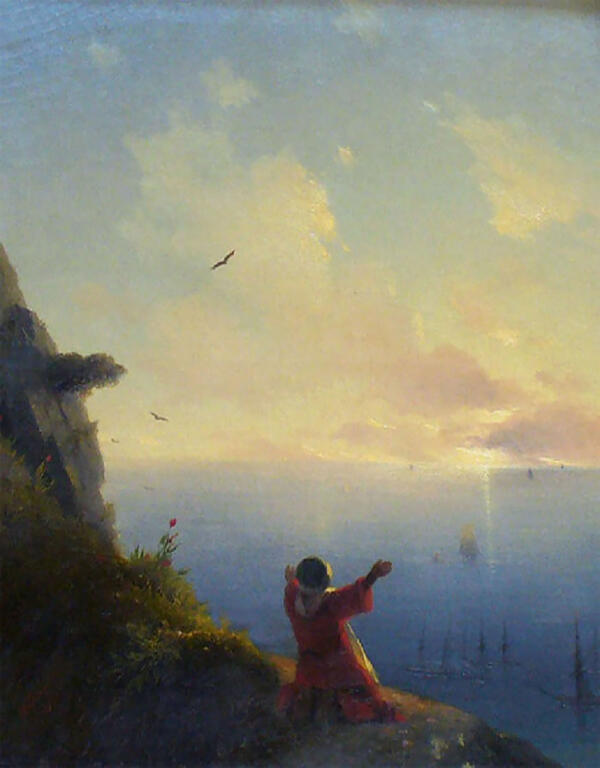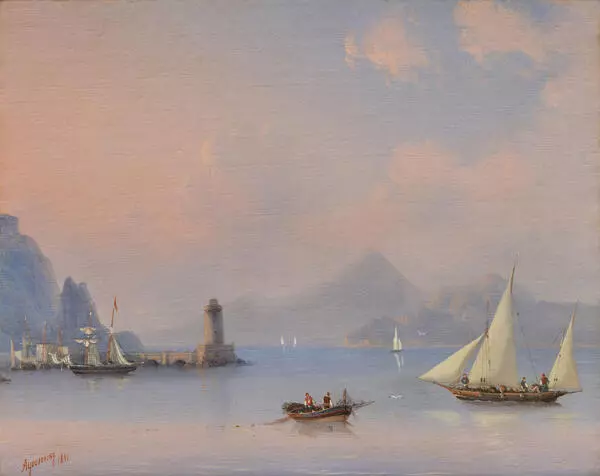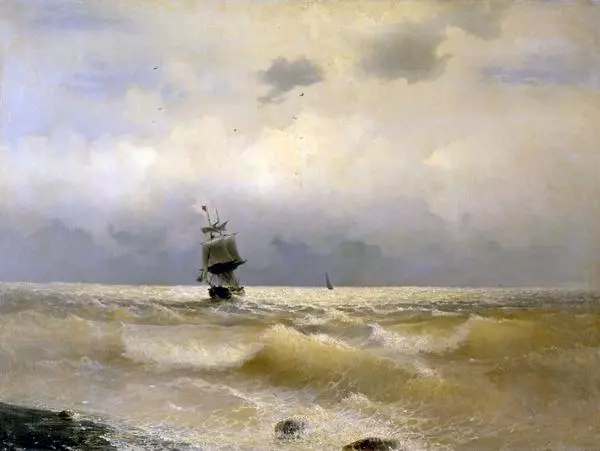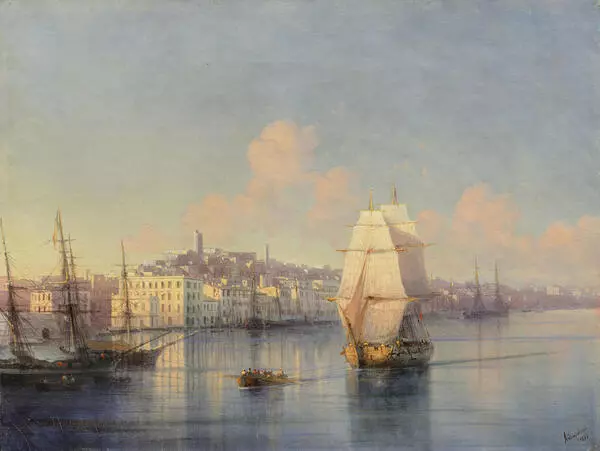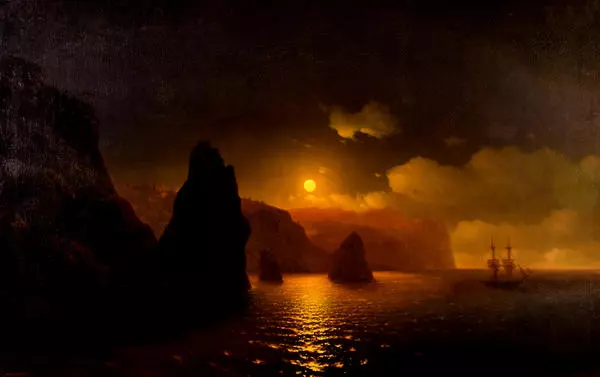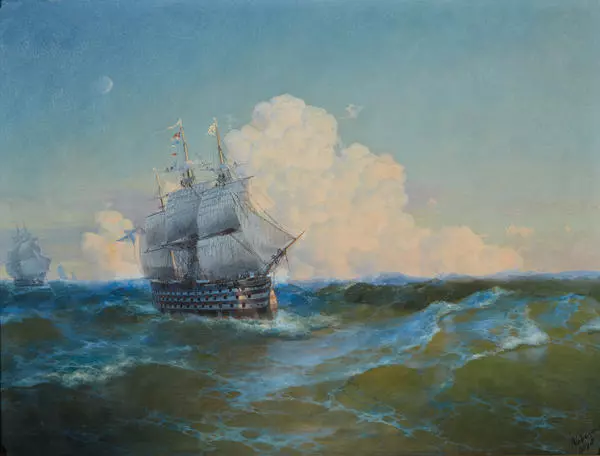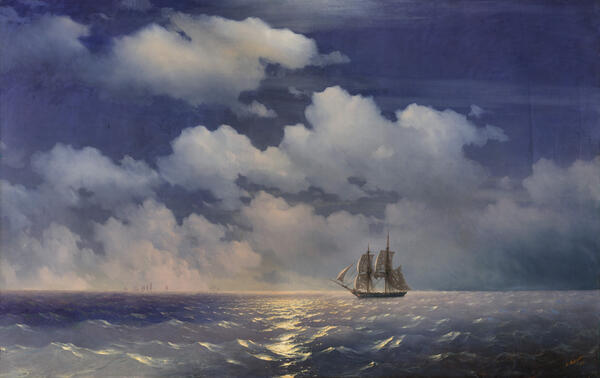Ivan Aivazovsky created the painting ‘Landscape’ in 1856. He captured a view of the Ukrainian steppe in Ukraine at dusk. On the right, a hut can be seen in the distance, and on the left cattle are grazing. The warm sun rays are reflecting a crimson color on the backs of animals. For this Landscape the artist chose a low line for the horizon. Thus, he was able to fill most of the canvas with the sky and emphasize its vastness.
Ivan Aivazovsky is more known for his seascapes. However, marinas were not the only thing the artist painted: his works of art included paintings of Crimean coastal cities, views of the Caucuses and stories from the Bible. Ivan Samarin, author of the book ‘Aivazovsky, ” mentioned that the events during the mid-1850s forced the artist towards the genre of “landscapes.” From 1853 to 1856 The Crimean war happened. The artist’s family was evacuated to Kharkov, and Ivan Aivazovsky made his way there to be with his wife and daughters. In Kharkov, ’… he was surrounded by a part of the Ukrainian flatland and by wheat fields blowing in the wind — just as endless and therefore reminiscent of the sea, ’ Samarin said.
Later, the famous marine painter illustrated views of the grassland with chumaks' (Ukrainian oxcart drivers) wagons, oxen and distant mills. In any landscape, whether it be the sea or grasslands, the artist constantly portrays the wonders of nature with no comparison to man. In the painting ‘Landscape’ of 1856, this intention is clearly visible.
By the 1850s the artist had already become very well experienced. His works were highly praised by Nicholas I. The painter Kirill Lemokh described the artist’s relationship with the Emperor in the following way: “When travelling by sea on a paddle steamer, the Emperor took Aivazovsky with him. Standing on the cover of one of the wheels of the steamboat, the Tsar yelled at Aivazovsky standing on the the other wheel: “Aivazovsky! I”m the Tsar of the earth, and you”re the Tsar of the sea! ”
Due to the Emperor’s generosity, Ivan Aivazovsky traveled a great deal. The artist admitted that because of the grace of Nicholas I he was able to witness “sky-blue waters and the skies of Naples, the Adriatic coast, visit two cradles of civilization and look at their ancient arts, Rome and Byzantium, the shores of Levant, the Archipelago islands, and Mount Athos.”
